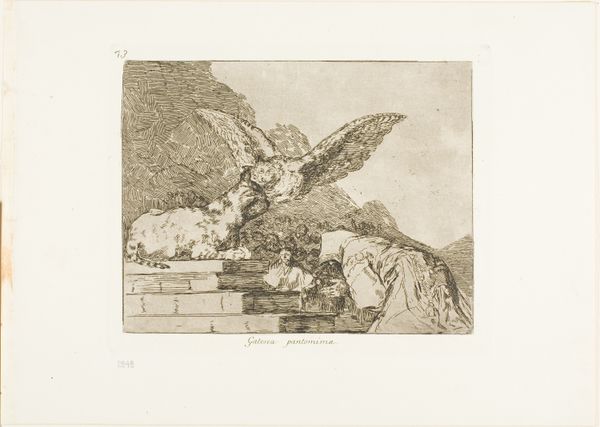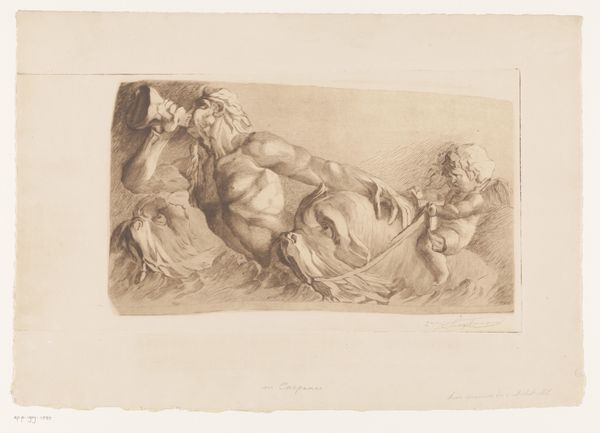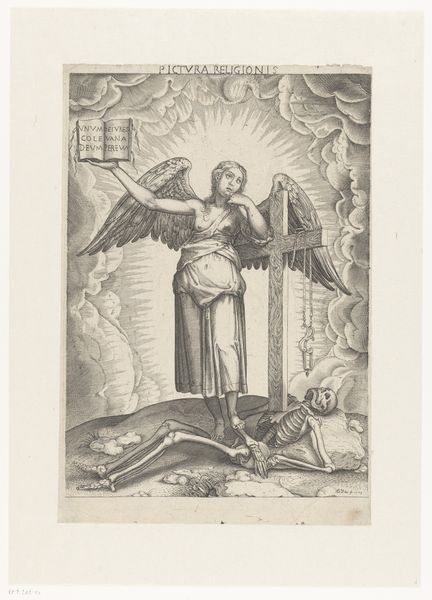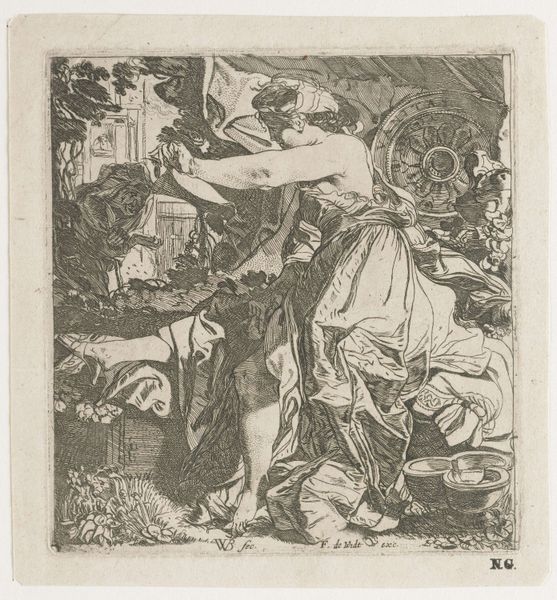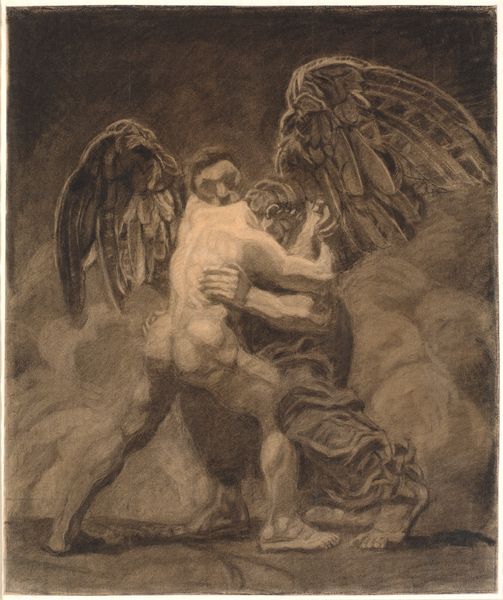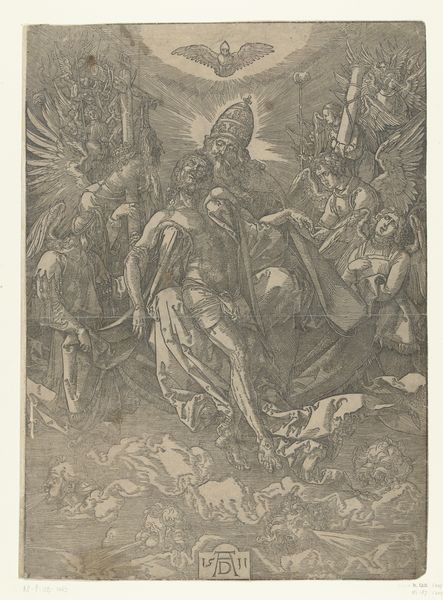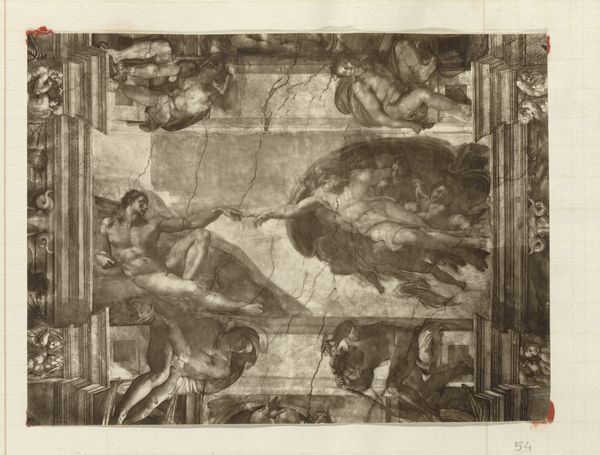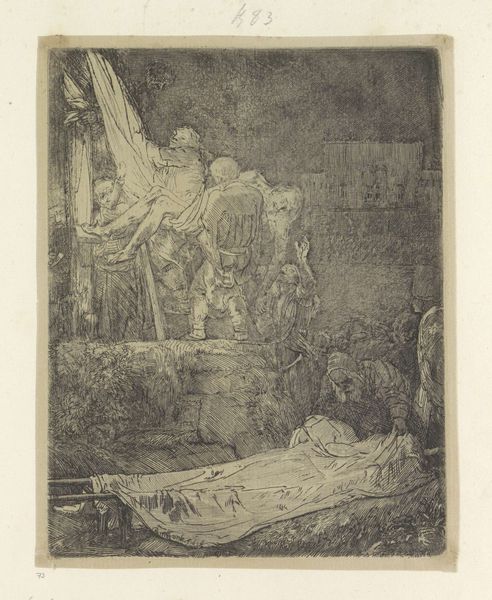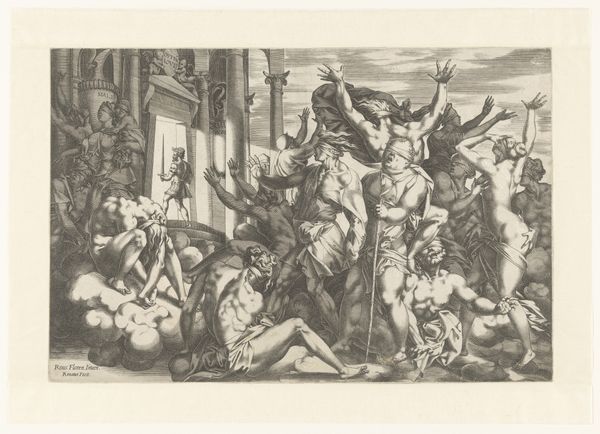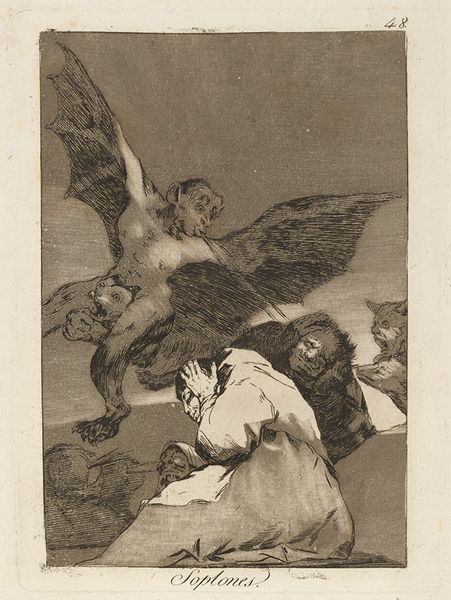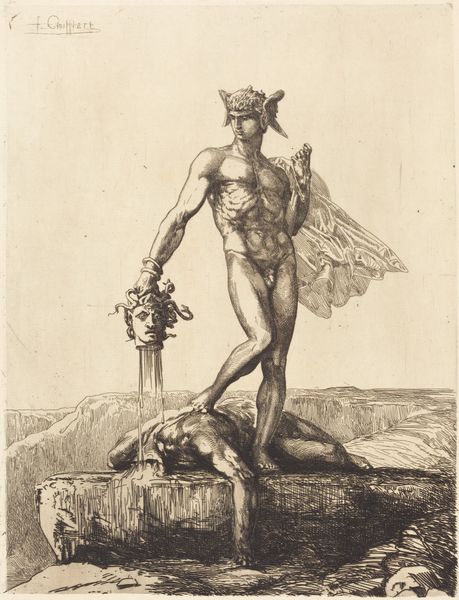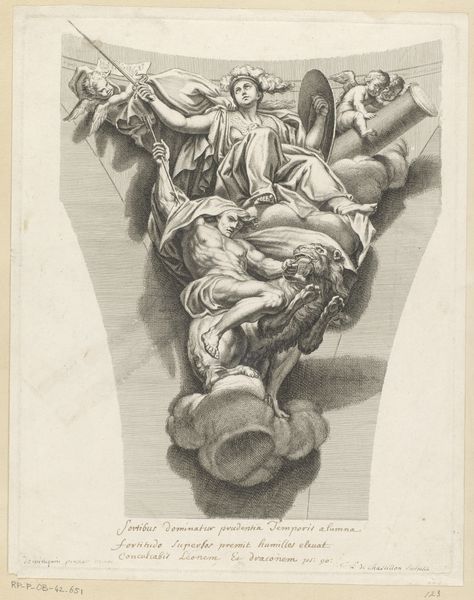
etching
#
allegory
#
baroque
#
dutch-golden-age
#
etching
#
figuration
#
history-painting
Dimensions: 18 x 18 cm
Copyright: Public domain
Curator: Ah, yes. This is Rembrandt van Rijn’s “The Phoenix or the Statue Overthrown,” an etching from 1658. What are your first impressions? Editor: A dark fable, wouldn’t you say? The crude scratching of the lines gives the whole scene a distressed feel. Look at the fallen figure at the base, a victim of… something. Curator: The composition is indeed striking. Observe how Rembrandt uses the interplay of light and shadow—chiaroscuro, if you will—to create a dramatic effect. The radiant light focused on the phoenix contrasts sharply with the darkness engulfing the fallen statue and figure. It directs our eyes to the symbol of rebirth triumphing over destruction. Editor: But the process, though! Consider Rembrandt’s technique—the etching process itself, laboriously biting into the metal plate with acid, the conscious choice to create these intense tonal gradations. Think of the press, the paper… it makes this history into something material. It asks us to question how triumphs get manufactured. Curator: Indeed. And think of the allegory embedded in this print. We can consider it in terms of broader symbolic structures. A statue overthrown is inherently rife with implications, no? Perhaps the collapse of a past regime superseded by a renewed spirit, as heralded by the phoenix and the cherubic trumpeters above. It invites semiotic readings. Editor: Precisely! And the statue—look at the textures, how worn and broken it is. This represents power decaying, rendered in a tactile, tangible form. And that matters because we’re then encouraged to ask *how* power decays. Was it through revolution, through famine, through war? What caused that body to lie fallen, broken? The artist, through his method, pushes us to see beyond mere symbols, to inquire into causes. Curator: I agree. The piece evokes powerful feelings of transition and resilience, achieved through visual balance but also thematic concerns. Editor: Ultimately, the rough material treatment underscores the precarious nature of power, while formal interpretations illuminate its potential rebirth. Curator: A perfect synthesis, wouldn't you say?
Comments
No comments
Be the first to comment and join the conversation on the ultimate creative platform.
